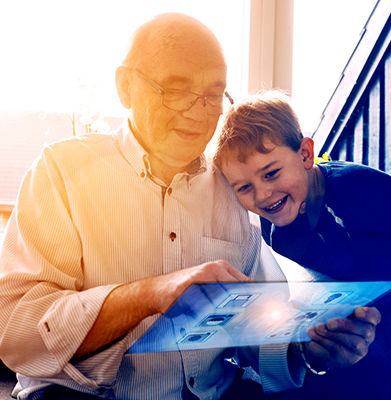As the COVID-19 pandemic keeps patients away from their trusted health care professionals, telehealth offers a glimpse into the future.
The novel coronavirus is having a seismic impact on the medical care of older adults in America, regardless of whether they get sick with COVID-19. The pandemic is affecting their physical and mental health and shifting the way we think about care delivery.
A change in perspective about care delivery is not such a bad thing. In fact, it may be the silver lining in this horrible chapter in history.
A survey we recently conducted shows that more than half of US adults age 70 and older (55%) experienced a disruption in their medical care during the first month of social distancing due to COVID-19. These older adults were most likely to delay primary or preventive care, and that’s alarming. Even more worrying, 15% of older adults put off essential medical treatment because of the pandemic. We don’t need medical degrees to know that delaying necessary care does not make the outcomes better.
As older adults continue to delay getting needed care, the problem will compound—increasing pent-up demand for services will ultimately vex health systems as patients’ conditions worsen. We think about the 4Ms of age-friendly care – what Matters, Medication, Mentation and Mobility – and how the pandemic may be delaying the assessments and interventions needed to prevent medication errors or to preserve cognitive and functional status.
Given this predicament, the questions that present themselves are two-fold. First, how do we deliver the best possible medical care to older patients who are hunkered down at home during the pandemic, provided by their trusted health care professional? Second, what lasting changes will COVID-19 have on our health care system, for better and for worse?
Interestingly, our research showed that disruptions in care for older adults also offer a bright spot for our nation’s health system as it grapples with COVID-19. Many older adults and their clinicians are connecting through telehealth—a safe, convenient way to deliver needed care during the pandemic.
Within the first month of the US outbreak, roughly one in five older adults (21%) said they already had a telehealth appointment because of COVID-19. Of those, 59% said the experience was about the same or even—surprise—better than an in-person visit.
The obvious benefits of telehealth focus on access, whether the barriers are COVID-19-related or not. For example, people living in rural areas face big obstacles getting care in non-pandemic times and expanded telehealth can help alleviate this problem. Telehealth also allows many family caregivers who otherwise cannot to participate in visits with clinicians.
Importantly, our survey showed that when it comes to information about COVID-19, older adults have the most trust in their own health care professionals, not elected officials or news sources. Telehealth presents a way to provide public health guidance to older people in a way that may be welcome, even preferred.
Other health care settings can benefit from increased telehealth. Nursing homes—hot spots for COVID-19 that urgently need our support—could better use telehealth to mitigate some of the risk involved with patients being transferred to hospitals, and with providers entering and travelling from room to room to care for nursing home patients.
Finally, after the initial wave of COVID-19, telehealth may help alleviate some of the compounding pent-up demand for care. And it can help providers pivot quickly to treating patients remotely if the country goes in and out of intermittent periods of social distancing.
While the benefits of telehealth are myriad and more apparent than ever, our survey revealed that 41% of older adults did not see telehealth as living up to the in-person experience. Providers must optimize the technology so that it caters to the less tech-savvy patient and caregivers—especially, if it is their only means of accessing health care—so that it replicates the in-person visit as close as possible. We must help providers adapt to a new modality of care. We also must be sure that privacy standards for information exchanged during telehealth visits are top-notch.
Fortunately, there are a lot of people working to make what looks like a good thing a whole lot better.
Our partners at the Institute for Healthcare Improvement created resources for telehealth implementation generally, and specifically for the older adult population through our Age-Friendly Health Systems initiative. The Geriatric Emergency Department Collaborative and Home Centered Care Institute are also providing guidance on how telehealth can be implemented in emergency rooms and in home-based primary care across the country. Collaborative efforts like these will be important going forward as health care providers familiarize themselves with the technology and act as guides for their patients navigating it for the first time.
If we focus on optimizing the telehealth experience for patients, particularly older adults who may be less tech-savvy, it will be a lasting positive outcome of a world irrevocably changed by COVID-19. That will not change perspectives on the harrowing moments we have all witnessed over the last several, tragic weeks. But for the long-term interests of our health care system and older adults and their caregivers who need age-friendly care, I will acknowledge any bright spot I see.
To go to the results of the survey conducted April 10-15, 2020, click here.
Sincerely,
Rani Snyder, MPA
Vice President, Program, The John A. Hartford Foundation

